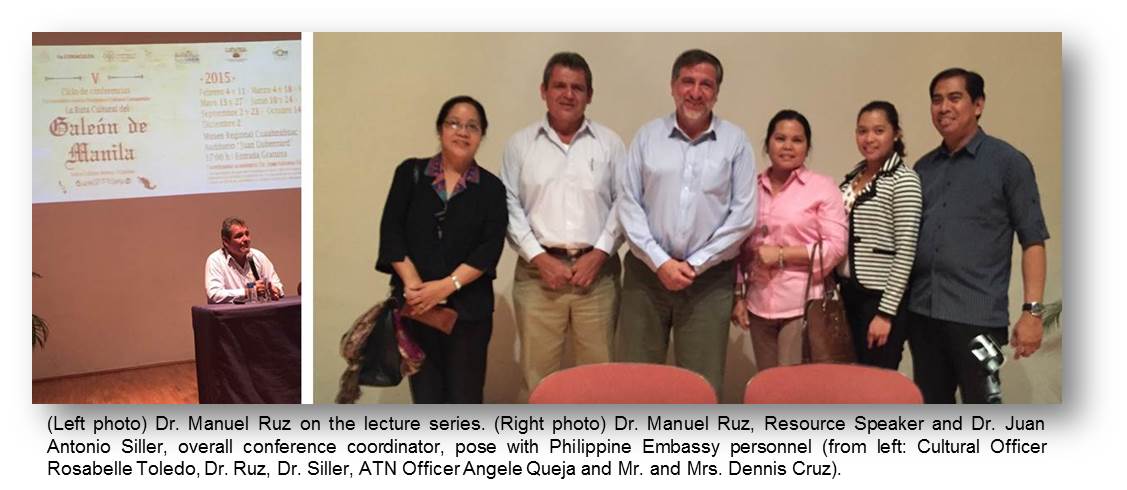
30 April 2015 - The Philippine Embassy in Mexico attended a lecture entitled “Military Architecture and Settlement in Acapulco” on April 15. It is the fifth in the series of lecture on the Cultural Route of the Manila Galleon, being held at the Museo Cuauhnahuac (Palacio de Cortés) in Cuernavaca, State of Morelos.
The lecture was conducted by Dr. Manuel Ignacio Ruz Vargas, a professor at the Autonomous University of Guerrero, Mexico. He is also a Member of the International Council of Monuments and Sites (ICOMOS) and the Caribbean Coastal Area Management (CCAM) Foundation in Mexico.
Dr. Ruz said Acapulco was designated as the only commercial port between New Spain and Asia by King Philip II in April 1579 and as a city through Royal Decree in November 1799 by Charles IV of Spain. The port of Acapulco received and dispatched Manila Galleons, as well as a few ships coming from Peru, Chile and Central America.
Dr. Ruz added that during the colonial period, the military engineers played a very important role in the fortification of the territory as they were in charge of civil and military constructions. They were also tasked to protect the assets of the Spanish crown.
The Fort of San Diego was built as a military stronghold to protect the Bay and prevent enemy from getting to shore. Its construction was done in various stages and by the best engineers of the Spanish Crown.
The structures also enabled communication, access on trade inside and outside of the city, as well as guaranteed self-sufficiency not only for the city of Acapulco but largely the Kingdom of Spain as well. These made Acapulco the bridge between three continents – Asia, America and Europe.
In an accompanying video presentation, Dr. Ruz showed the different architectural styles of fortifications of New Spain, plans and topographic maps of the city and the Port of Acapulco. END

